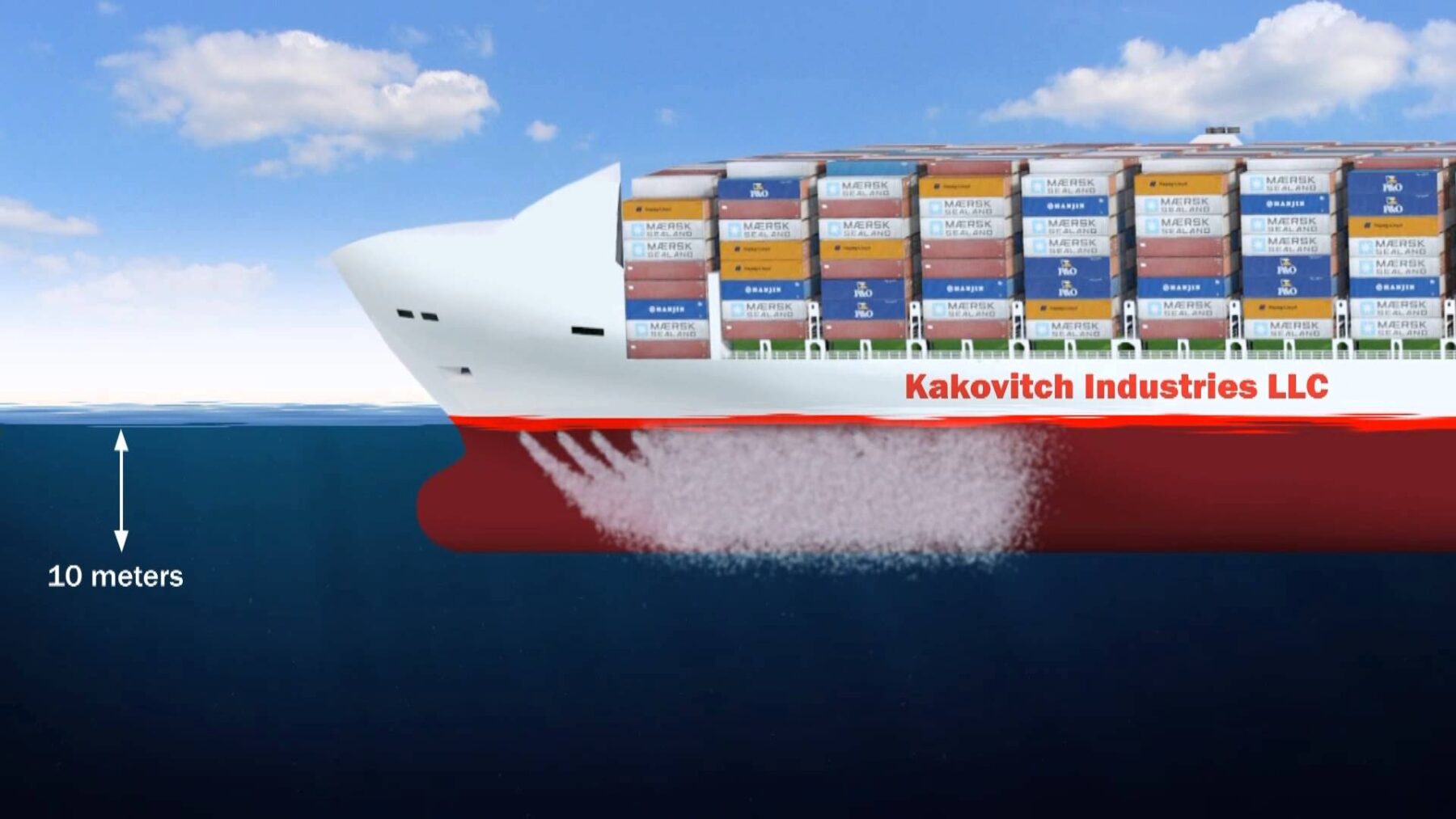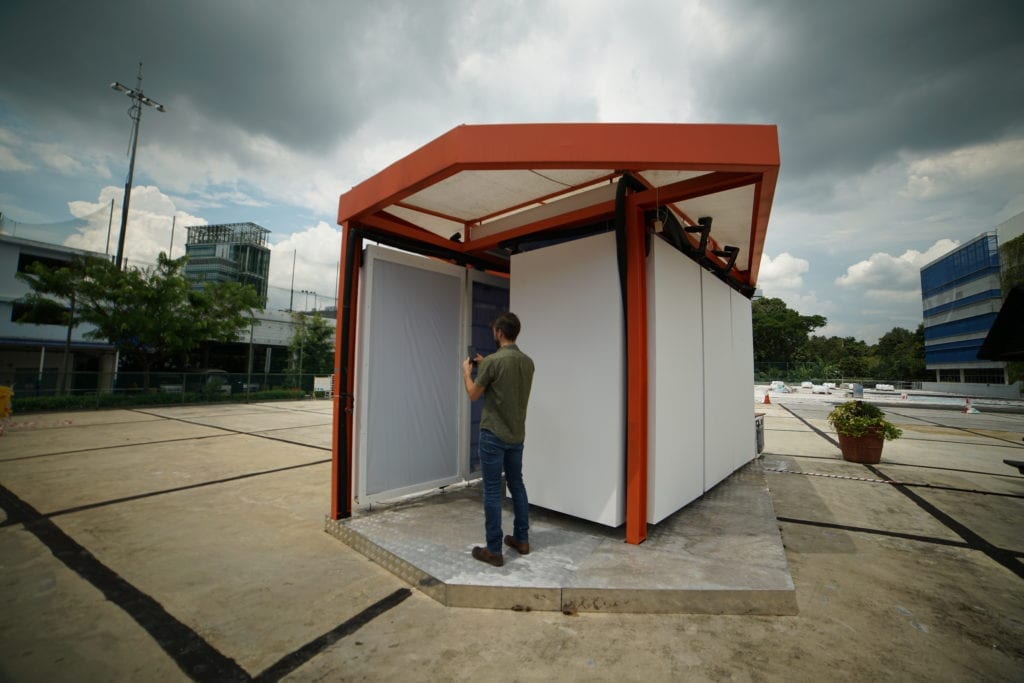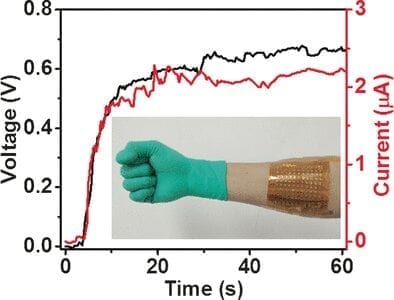
Injecting bubbles at a ship’s hull is an effective way of reducing drag, and fuel consumption of the ship.
That is, if those bubbles have the right size. Researchers of the University of Twente show that the reduction is negligible when tiny bubbles are used. Large, deformable bubbles do the trick, the scientists conclude in Physical Review Letters of September 2.
Blowing bubbles underneath a ship’s hull, causes them to be pushed against the surface. In the surface layer between the ship and water, these air bubbles cause less friction: it’s also known as air lubrication. In practice, friction can be reduced 20 percent, with a huge impact on fuel consumption and CO2 emission. The precise mechanism is still unknown, as the local water flow is complex and turbulent. As the UT scientists prove now: the size of the bubbles make a big difference: tiny bubble don’t have a net effect at all. This may seem counterintuitive, but large bubbles that can be deformed easily, give the strongest effect.
For investigating the effects, the University of Twente has a unique ‘Taylor Couette’ setup, capable of generating fully developed turbulent flow. This machine consist of two large cylinders with fluid in between. When the inner cylinder is turning fast, injected bubbles will be pressed against the surface, just like they do at the ship’s hull. At the surface of the cylinder, they start influencing friction/drag. This setup enables the scientists to search for the relevant parameters in efficient air lubrication.
With four percent of air in the water, a reduction of 40 percent is feasible in the experimental setup, using large, millimeter size bubbles. By adding a tiny amount of ‘surfactant’, the scientists were able to vary the surface tension between bubbles and water, and they could vary bubble dimensions. The other properties, like flow speed and density, were kept the same. What was the result? On average, the bubbles get much smaller, because the surfactant prevents bubbles getting together, coalescing, forming larger bubbles. Within the turbulent flow, the bubble have a uniform distribution and moreover, they will not be pushed against the surface. With, again, four percent of air that is in microbubbles now, there is four percent reduction: there is no net air lubrication at the ship’s hull. Ruben Verschoof: “From previous experiments, we knew that deformable bubbles work well, but in no way we expected a dramatic difference like this.
By doing the experiments in real life turbulent flows, and not in the simplified situation of slow and laminary flow, the outcome of this research is directly applicable in the naval sector. For reducing drag in pipelines, the experiments also provide valuable new insight.
Learn more: AIR LUBRICATION: LARGE BUBBLES DO THE TRICK
The Latest on: Air lubrication for ships
[google_news title=”” keyword=”Air lubrication for ships” num_posts=”10″ blurb_length=”0″ show_thumb=”left”]
via Google News
The Latest on: Air lubrication for ships
- ‘Dismissing global warming? That was a joke’: Jeremy Clarkson on fury, farming and why he’s a changed manon April 26, 2024 at 10:00 pm
The former Top Gear presenter claims his controversialist persona was just a caricature, and he’s really a reformed character living the good life. But do old habits die hard?
- Honda Civic 9th Generation 2012-2015 (FB/FG) Review: All Trims, Facelift Includedon April 26, 2024 at 7:36 am
From 2014, Honda's LaneWatch blind-spot monitoring system is standard on EX, EX-L, and Hybrid models, which is displayed on the infotainment screen. 2015 adds dynamic guidelines to the backup camera ...
- New fuel-flexible gensets look to quench methanol thirston April 25, 2024 at 2:19 am
A first mover in methanol large-bore engine technology, MAN ES is expanding its portfolio of small-bore, methanol dual-fuel gensets, offering wider choices for newbuilds ...
- Red Sea conflict brings massive carbon emissions increases in ocean freight shippingon April 24, 2024 at 7:03 am
For containers being shipped via ocean from the Far East to Mediterranean, the CEI reveals carbon emissions increased by 63% in Q1 2024 ...
- Hengli Heavy Industries receives an order for four bulkers from Ciner Shippingon April 24, 2024 at 4:48 am
The four 82,000 dwt newbuilds will be scrubber-fitted and are expected to be delivered during March and September 2027 ...
- Government honours exceptional exporters in prestigious awardson April 24, 2024 at 3:36 am
Now in their second year, the awards celebrate the international sales success of small-medium businesses across the UK and provide a stepping stone for further growth and opportunity. Winners include ...
- Rio Tinto to test Alfa Laval air lubrication technologyon April 18, 2024 at 6:13 pm
Multinational mining group, Rio Tinto, is to install an OceanGlide air lubrication system developed by Alfa Laval on one of its bulk carriers.
- Close calls: For years, ships lost propulsion near Key Bridge with little scrutinyon April 18, 2024 at 2:11 pm
Since 2010, more than 100 ships have had engine or other mechanical troubles in the Chesapeake Bay and Patapsco River, including some perilously near the Key and Bay Bridges, a Banner investigation ...
- Rio Tinto Bulker Takes on Air Lubrication Systemon April 18, 2024 at 5:41 am
Alfa Laval will retrofit one of the firm's bulkers with one of its OceanGlide fluidic air lubrication systems.
via Bing News











